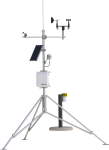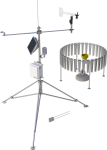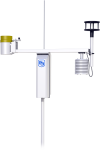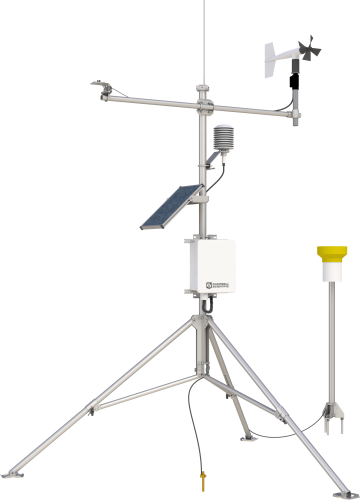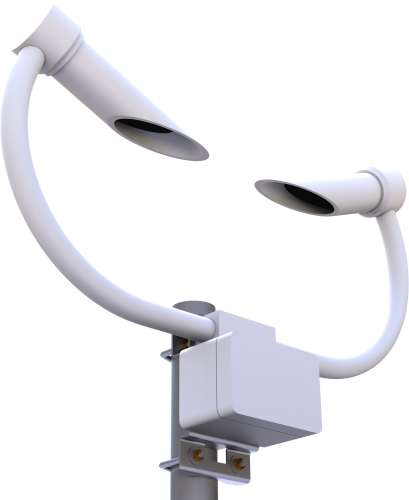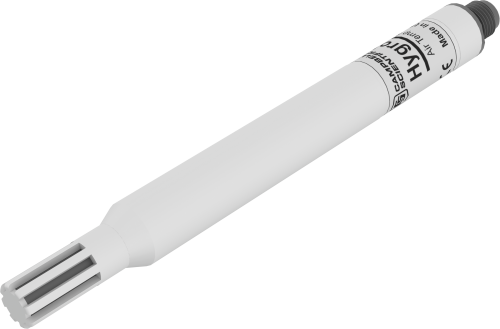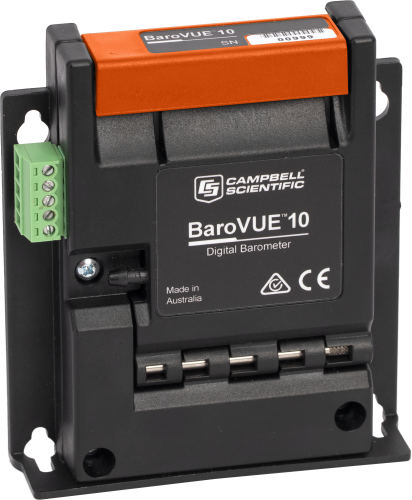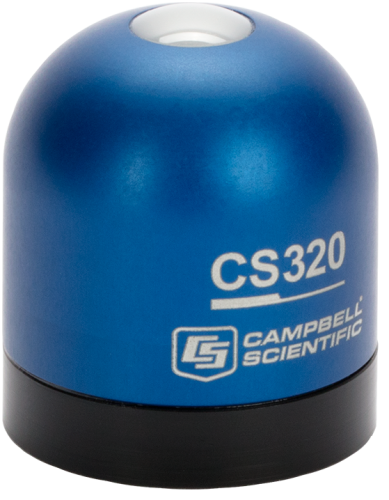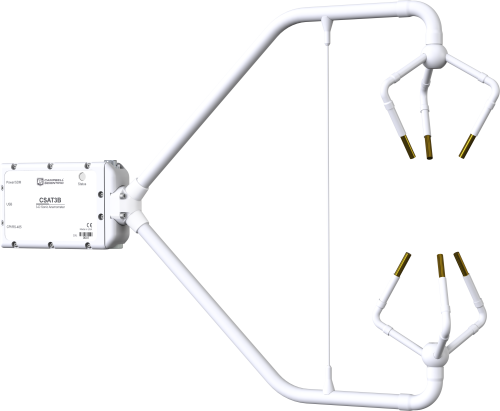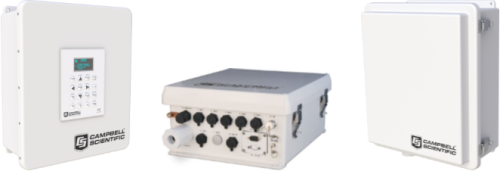How We Can Help You
From single research weather stations to mesoscale weather networks (mesonets), Campbell Scientific automatic weather stations have become the worldwide standard for climate and boundary-layer meteorology. They are integral parts of forecasting and monitoring systems worldwide. Accurate measurements, low power requirements, and proven reliability in extreme weather conditions make our weather stations ideal for all types of meteorological and climatological monitoring anywhere on earth.
Learn moreCheck out some awesome examples of what our equipment can do in this area
For an introduction to our solutions that are compliant with World Meteorological Organization (WMO) and Global Basic Observing Networks (GBON) standards for the Systematic Observations Financing Facility (SOFF) initiative, visit our GBON-Compliant Observation Solutions page.
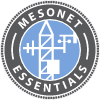
For an introduction to mesonets, their value, and how they work, visit the Mesonet Essentials section.
Customize a System
In addition to our standard systems available, many of the systems we provide are customized. Tell us what you need, and we’ll help you configure a system that meets your exact needs.
More Details about Our Automatic Weather Stations (AWS) and Meteorologic Instruments Systems
Data loggers for weather monitoring
Our weather stations are based around a programmable data logger (typically a CR1000 or CR3000) that measures the sensors, then processes, stores, and transmits the data. Our data loggers have wide operating temperature ranges, on-board instructions, programmable execution intervals, and ample input channels for commonly used sensors. Wind vector, wet bulb, histogram, and sample on maxima or minima are standard in the data logger instruction sets. Most sensors can be measured directly—without external signal conditioning.
Data are typically viewed and stored in the units of your choice (e.g., wind speed in mph, m/s, knots). Measurement rates and data recording intervals are independently programmable, allowing calculation of 15-minute, hourly, and daily data values from 1-minute or 1-second measurements, for example. Conditional outputs, such as rainfall intensity and wind gusts, can also be recorded. The program can be modified at any time to accommodate different sensor configurations or new data processing requirements. If needed, channel capacity can be expanded using multiplexers, including a model designed specifically for thermocouples.
Weather Sensors
Almost any meteorological sensor can be measured by our data loggers, allowing stations to be customized for each site. Typical sensors used on our stations include, but are not limited to:
- Wind speed and direction
- Solar radiation
- Temperature (air, water, soil)
- Relative humidity
- Precipitation
- Snow depth
- Barometric pressure
- Soil moisture
In some locations, hydrological sensors provide additional measurements, such as water level of a nearby stream.
Data Retrieval
We offer multiple communications options for data retrieval, which can be mixed within the same network. Telecommunications options include short-haul, telephone (landline, voice-synthesized, cellular), radio frequency, multidrop, and satellite. On-site options include storage module and laptop computer.
Software
Our PC-based support software simplifies the entire weather monitoring process, from programming to data retrieval to data display and analysis. Our software automatically manages data retrieval from networks or single stations. Robust error-checking ensures data integrity. We can even help you post your data to the Internet.
Example Weather Stations
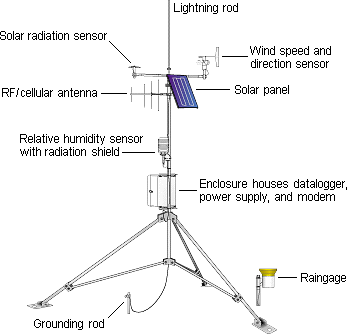
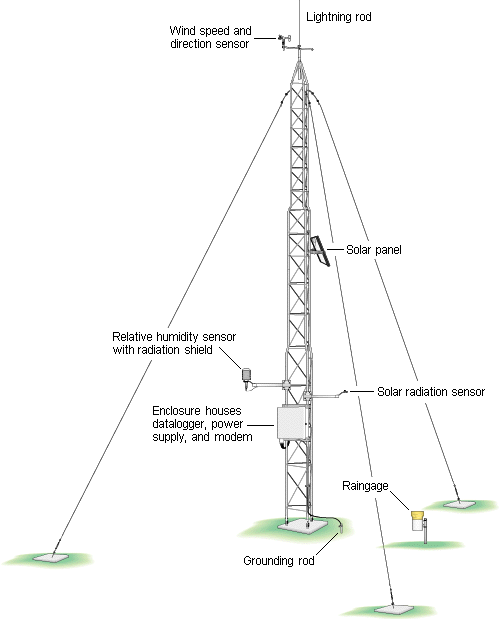
Resources and Links
Case Studies
In 2019, Campbell Scientific embarked on a significant project with the Malawi Department of Climate......read more
Tropical volcanic islands are biodiversity hotspots where the Critical Zone (CZ) remains poorly studied. In......read more
Overview In May 2019, the Government of Zambia embarked on the Climate Adaptation Water and Energy......read more
Overview The Chauvet-Pont d'Arc and Aven d'Orgnac caves are home to prehistoric treasures of rare artistic......read more
Overview The Royal Chapel of Chaalis Abbey—often referred to as the “French Sistine Chapel”—is a treasure......read more
Introduction At Campbell Scientific, we are committed to providing cutting-edge weather station solutions to organisations around......read more
Overview The National Weather Observation Network in Croatia, led by the Croatian Meteorological and Hydrological Service......read more
Overview The Kingdom of Eswatini in South Africa—with its agricultural-based economy and a population of less......read more
FAQs for
Number of FAQs related to Automatic Weather Stations (AWS) and Meteorologic Instruments: 1
-
We manufacture a weather station for Hunter that they have integrated with some of their irrigation software and control packages. For details on rain shutoff capabilities and irrigation controls specific to Hunter systems, contact a Hunter distributor.
Related Integrators
- Hortus S.r.l.
- Ekotechnika spol. s r.o.
- Ecosearch S.r.l.
- Scientific Enterprises
- FDS Mätteknik AB
- Scanmatic Instrument Technology AS
- COFAS
- COMET Andrzej Mostek Sp. k.
- Labochema - Lithuania
- Labochema - Estonia
- Labochema - Latvia
- Koenders Instruments
- Intermodal Services Co. W.L.L.
- EnviTek Magyarország Kft.
- ProfEC Ventus GmbH
- NVotek
- Al Fakhar Co. Ltd.
- Vista ehf
- METEOS DOO
- Ambimetric
Upcoming Events
-
National Hydrologic Warning Council 2025
June 16-20, 2025 | Tucson, AZ -
HydrometAFRICA 2025
July 15-17, 2025 | Pretoria, South Africa -
AASC Mesonet Community Meeting 2025
July 22-24, 2025 | Albany, NY
Articles and Press Releases
Newsletter Articles
- New MetSens Compact Sensors 26-07-2018
- Introducing the New PRO-Series Weather Stations 15-11-2017
- CS320: Digital, Heated Thermopile Pyranometer for Environmental Research 17-07-2017
- EE181 Temperature and Relative Humidity Probe Available Soon 28-10-2016
- Case Study: High-Elevation Weather in Peru 21-07-2016
- Case Study: U.S. Climate Reference Network 09-05-2013
Privacy Policy Update
We've updated our privacy policy. Learn More
Cookie Consent
Update your cookie preferences. Update Cookie Preferences













